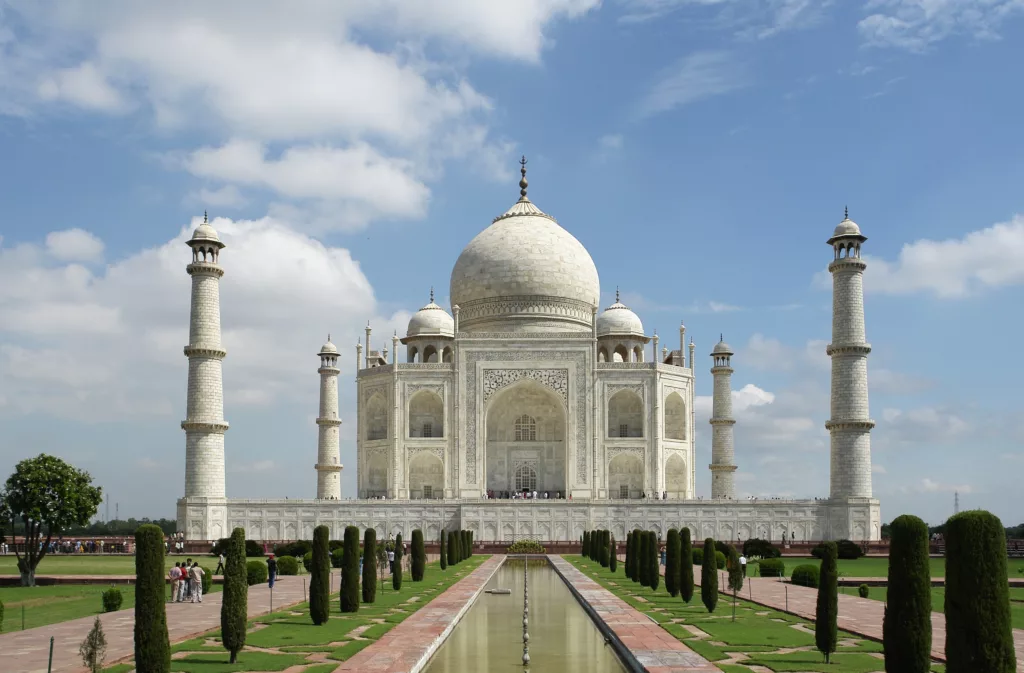The Taj Mahal — one of the world’s most admired monuments — stands as a symbol of eternal love and architectural brilliance. Yet, behind its marble walls, a long-standing debate continues: Was the Taj Mahal originally a Hindu temple? Over the years, this question has sparked heated discussions, political arguments, and even court petitions. Let’s uncover the truth, separating fact from fiction.
The Official Historical Account
Most historians agree that the Taj Mahal was built by the Mughal Emperor Shah Jahan between 1632 and 1648 CE in memory of his wife, Mumtaz Mahal.
- The structure was designed as a mausoleum, blending Persian, Islamic, and Indian architectural influences.
- Historical records such as Shah Jahan’s chronicles, European travelers’ accounts, and Mughal court documents confirm its construction under imperial supervision.
- The Archaeological Survey of India (ASI), which manages the site today, maintains that the Taj Mahal has always been a Mughal-era tomb, not a repurposed temple.

The “Tejo Mahalaya” Theory
The claim that the Taj Mahal was once a Hindu temple — dedicated to Lord Shiva and called Tejo Mahalaya — was popularized by P. N. Oak in his 1989 book “Taj Mahal: The True Story.”
According to Oak’s theory:
- The Taj was originally built as a Shiva temple-palace by a Rajput king before being taken over by Shah Jahan.
- He alleged that the monument’s domes, spires, and decorative motifs were originally Hindu architectural elements later adapted by the Mughals.
- Oak also claimed that Hindu idols and inscriptions were hidden or sealed within the monument’s underground chambers.
However, Oak’s assertions have never been supported by credible historical or archaeological evidence.
The Lack of Evidence
The ASI, along with multiple independent historians, has dismissed the temple-origin theory as pseudo-history. Key counterpoints include:
- There is no record of a structure called Tejo Mahalaya before the 17th century.
- The Mughal court documents include detailed expense records, names of architects, artisans, and laborers who built the Taj Mahal.
- Contemporary visitors like Jean-Baptiste Tavernier (a French jeweler) and Peter Mundy (a British traveler) described the Taj Mahal as a new construction during their lifetimes.
- Scientific analysis of the structure shows uniformity in materials and design, consistent with a single construction phase under Mughal rule.
The 2022 Court Petition
In 2022, a petition was filed in an Indian court seeking to open 22 sealed rooms in the Taj Mahal, allegedly containing Hindu idols. The court, however, dismissed the plea, stating that such claims are not supported by historical facts or scholarly research.
The ASI reaffirmed that those rooms are only maintenance areas, not hidden temples.
Political and Cultural Dimensions
The Taj Mahal controversy isn’t just about history — it’s also about identity.
- Some political and ideological groups use the “Hindu temple” narrative to reclaim perceived lost heritage, while others see it as an attempt to rewrite history.
- Scholars warn that turning heritage into a religious battleground risks overshadowing the monument’s cultural and artistic value.
What the Evidence Really Shows
After centuries of study, no credible archaeological proof has emerged to support the claim that the Taj Mahal was ever a Hindu temple.
Instead, overwhelming evidence points to it being a masterpiece of Mughal architecture, constructed as a tomb of love — a monument to devotion and loss.
Conclusion
The Taj Mahal remains one of humanity’s greatest achievements, admired by people of all faiths.
While myths like the “Tejo Mahalaya” theory may persist in popular discourse, history, architecture, and archaeology all point to one truth — the Taj Mahal was conceived, designed, and built by Shah Jahan as an enduring symbol of love and artistry, not as a converted temple.


